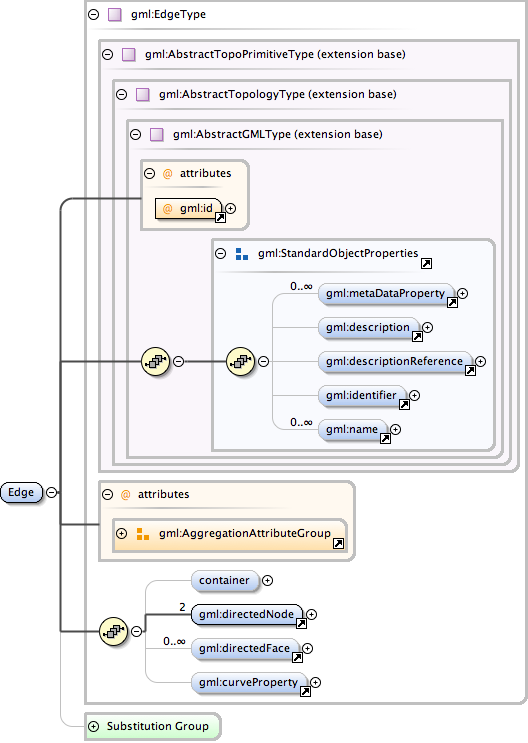| Namespace | http://www.opengis.net/gml/3.2 | |||||||||||||||||||
|
Annotations
|
|
|||||||||||||||||||
|
Diagram
|
 |
|||||||||||||||||||
| Type | gml:EdgeType | |||||||||||||||||||
| Type hierarchy | ||||||||||||||||||||
|
Properties
|
|
|||||||||||||||||||
|
Used by
|
|
|||||||||||||||||||
| Model | gml:metaDataProperty* , gml:description{0,1} , gml:descriptionReference{0,1} , gml:identifier{0,1} , gml:name* , gml:container{0,1} , gml:directedNode{2,2} , gml:directedFace* , gml:curveProperty{0,1} | |||||||||||||||||||
| Children | gml:container, gml:curveProperty, gml:description, gml:descriptionReference, gml:directedFace, gml:directedNode, gml:identifier, gml:metaDataProperty, gml:name | |||||||||||||||||||
|
Instance
|
|
|||||||||||||||||||
|
Attributes
|
|
|||||||||||||||||||
|
Source
|
|
|||||||||||||||||||
| Schema location | http://schemas.opengis.net/gml/3.2.1/topology.xsd |